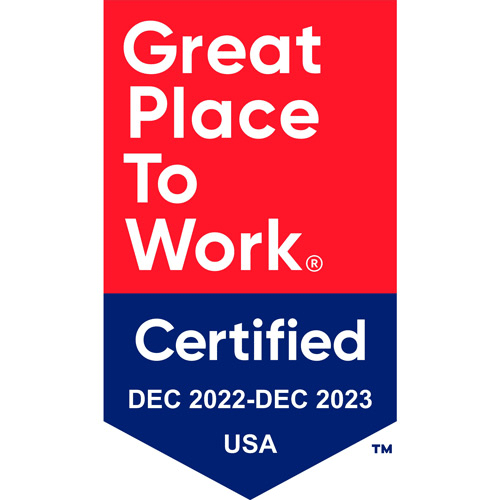Basics of the Pharmaceutical Distribution Process
- PM
- September 15, 2023
- Edited September 15, 2023
Table of Contents
You’ve probably picked up a prescription from a pharmacy, or taken a medication handed to you by a nurse or doctor. But what you probably haven’t done, is stopped to consider the journey that pill took to get to you. The process is a complex one, and understanding its ins and outs can help us appreciate the work that goes into ensuring we have access to the medications we need when we need them.
Today, I’ll be taking you through the basics of the pharmaceutical distribution process – the backbone of how medications are moved from the manufacturing site all the way to the patient helpful for pharmaceutical regulatory compliance. We’ll get into the complex network that involves a multitude of stakeholders, including manufacturers, wholesalers, and pharmacies, to name a few. By the end of this, you’ll have a better understanding of this process and the meticulous work that ensures the right medication gets to the right place at the right time. Let’s get started, shall we?
The Pharmaceutical Distribution Process
The pharmaceutical distribution process, also known as the pharmaceutical supply chain, is the system through which medications are delivered from manufacturers to patients. It involves a series of interconnected activities, managed by different stakeholders, each playing a critical role in ensuring that the medicines reach the patients safely, efficiently, and in the right condition.
The main players involved in the pharmaceutical distribution process include:
- Manufacturers: These are the companies that develop and produce the drugs. They could be large multinational corporations producing a wide range of medications or smaller specialized companies focusing on specific drugs or therapies.
- Wholesalers/Distributors: These are intermediaries who buy medicines from manufacturers in large quantities and distribute them to pharmacies, hospitals, and healthcare facilities.
- Pharmacies and Hospitals: These are the points of care where patients receive their medications. They can be retail pharmacies, online pharmacies, hospital pharmacies, or clinics.
- Patients: The end-users of the pharmaceutical distribution process. They consume the medications based on prescriptions from healthcare providers.
- Regulatory Bodies: Organizations like the Food and Drug Administration (FDA) in the United States or the European Medicines Agency (EMA) in Europe that oversee and regulate the pharmaceutical industry, ensuring safety, efficacy, and compliance.
So, the pharmaceutical distribution process is much more than a simple delivery mechanism. It is a complex system designed to safely and efficiently move medicines from manufacturers to patients while maintaining strict quality control and regulatory compliance. Understanding this process gives us a newfound appreciation for the medications we can so readily access.You can find solutions at https://gmppros.com/our-solutions/ provided by us.
Now that we’ve established a basic understanding of what the pharmaceutical distribution process is and who the key players are, let’s dig into the specific stages of this process. Here’s how a medication typically goes from being a mere concept to landing in your medicine cabinet:
- Research and Development (R&D): Every medication begins its journey here. R&D involves years, sometimes even decades, of meticulous research and development. Scientists first identify a medical need, and then explore numerous chemical and biological substances to create a compound that can potentially treat the identified health issue.
- Regulatory Approval: After a new drug is developed, it goes through rigorous testing in the form of clinical trials. The aim is to evaluate the drug’s safety and effectiveness. Once these trials are completed successfully, data is submitted to regulatory bodies such as the FDA or EMA. If they’re satisfied with the safety and efficacy data, they approve the drug for manufacturing and sales.
- Manufacturing: Post approval, the drug enters the manufacturing phase. It’s produced in large volumes in factories, adhering to strict standards to ensure consistency and quality.
- Packaging and Labeling: Once the drug is manufactured, it’s packaged and labelled. This isn’t just about making the drug look appealing. The packaging protects the drug from damage, contamination, and degradation, while the label provides crucial information like dosage, ingredients, expiry date, and other instructions.
- Storage and Transportation: After packaging and labelling, the drugs are stored in warehouses. They’re then distributed to different points of care – pharmacies, hospitals, clinics, etc., via road, air, or sea. Each mode of transportation needs to meet certain standards to ensure the drug’s quality isn’t compromised.
- Sales and Dispensing: Finally, the drugs reach the points of care where they’re sold or dispensed to the patients based on prescriptions from healthcare professionals.
This process might seem linear and straightforward, but it’s a lot more intricate and interconnected when you delve into the details. Plus, there’s a constant need for regulatory compliance at every stage to ensure patient safety.
Moving on to one of the most important aspects of the pharmaceutical distribution process:
Regulatory Compliance
Regulatory compliance refers to the practice of adhering to laws, regulations, guidelines, and specifications relevant to the pharmaceutical industry. It’s not just a legal obligation; it’s a crucial element to ensure patient safety, medication efficacy, and public trust in the pharmaceutical industry.
In the context of the pharmaceutical distribution process, regulatory compliance comes into play at every stage:
- During R&D and Regulatory Approval: Pharmaceutical companies need to conduct clinical trials following a set of strict guidelines, such as the International Council for Harmonisation of Technical Requirements for Pharmaceuticals for Human Use (ICH). The data from these trials form the basis for regulatory approval.
- During Manufacturing: The manufacturing sites need to comply with the Good Manufacturing Practice (GMP) guidelines. GMP ensures drugs are produced and controlled according to quality standards, minimizing risks involved in pharmaceutical production that cannot be eliminated through testing the final product.
- During Packaging and Labelling: Packaging and labelling must comply with regulations to ensure important information like the drug’s name, ingredients, storage instructions, expiry date, and warnings are clearly mentioned. It’s critical for patient safety and appropriate usage.
- During Storage and Transportation: Storage and transportation of drugs must comply with Good Distribution Practice (GDP). It ensures that the quality and integrity of drugs are maintained throughout the supply chain, from the moment they leave the manufacturer till they reach the patient.
- During Sales and Dispensing: Pharmacists must follow rules and regulations while dispensing medications. For prescription drugs, a valid prescription from a licensed healthcare provider is mandatory. For over-the-counter (OTC) drugs, it’s crucial to provide necessary information to patients regarding safe use.
Non-compliance at any of these stages could lead to serious repercussions, including financial penalties for pharmaceutical companies, seizure of drugs, or even worse, harm to patients. Regulatory compliance is a big responsibility for everyone involved in the pharmaceutical distribution process.
Challenges in the Pharmaceutical Distribution Process
Despite stringent regulations and the meticulous work of countless professionals, the pharmaceutical distribution process doesn’t come without its share of challenges:
- Counterfeit Drugs: This is one of the major threats to the pharmaceutical industry. Counterfeit drugs may contain harmful ingredients or incorrect dosages, leading to severe health consequences for patients. They also negatively impact the reputations of pharmaceutical companies and health institutions.
- Maintaining Drug Quality: Ensuring the quality of drugs throughout the supply chain is a mammoth task. This becomes especially challenging when dealing with temperature-sensitive drugs. Any deviation from the prescribed temperature range can potentially compromise the drug’s quality and effectiveness.
- Regulatory Compliance: With laws and regulations differing from country to country, maintaining compliance can become a challenge, particularly for pharmaceutical companies operating globally.
- Inventory Management: Overstocking can lead to wastage if drugs expire before they’re used, while understocking can result in shortages, preventing patients from receiving their medications on time.
These challenges are substantial, but they’re not insurmountable. Various measures are being taken to combat these issues. Implementing stricter regulations and controls, adopting advanced technologies for better tracking and quality control, and educating the public about the dangers of counterfeit drugs are just some of the ways these challenges are being addressed.
The Role Technology Plays
Technology has permeated every industry, and pharmaceuticals are no exception. Advancements in technology have provided tools and solutions that have significantly streamlined the pharmaceutical distribution process, helping overcome some of the challenges we just discussed.
- Track and Trace Technologies: Technologies such as Radio Frequency Identification (RFID) and barcoding help keep track of drugs throughout the supply chain. This allows for better inventory management and also helps in the fight against counterfeit drugs.
- Temperature Monitoring: For temperature-sensitive drugs, innovative solutions like temperature loggers and real-time temperature monitoring systems help maintain the appropriate conditions during storage and transportation, ensuring the quality of the drug is not compromised.
- Artificial Intelligence (AI) and Machine Learning (ML): AI and ML are being used to predict demand and optimize inventory, reducing waste and ensuring that there are no drug shortages. They’re also used in identifying patterns and anomalies that could suggest potential counterfeiting or diversion activities.
- Cloud Computing and Data Analytics: These are helping pharmaceutical companies comply with regulations more effectively by enabling real-time monitoring and analysis of data from across the supply chain. They also aid in documentation and reporting, essential aspects of regulatory compliance.
- Blockchain Technology: Although still in its early stages of adoption in this sector, blockchain holds immense potential. It can provide a secure, unalterable record of each transaction in the drug supply chain, further enhancing traceability and transparency.
By integrating these technologies, the pharmaceutical industry can improve the efficiency and reliability of the distribution process. But it’s not just about adopting the technology; it’s also about adapting to it. Training staff, updating policies, and ensuring these new technologies align with existing regulations are equally important.
Conclusion
So, we have seen in this article the intricate process a medication undergoes to move from a manufacturer to the patient. From the intensive R&D phase to the meticulous packaging and labelling, careful transportation, and final dispensing – each stage is designed to ensure safety, quality, and efficiency. This process is far from simple. It involves a complex network of stakeholders, each playing a critical role, all while adhering to stringent regulatory compliance measures. Despite challenges like counterfeiting, maintaining drug quality, and managing inventory, the pharmaceutical industry continues to thrive and deliver, largely thanks to advancements in technology with https://gmppros.com/.
Understanding the basics of the pharmaceutical distribution process helps us appreciate the monumental efforts behind the medication that we, as patients, often take for granted. It highlights the importance of each stakeholder in the process and the role technology plays in ensuring that the process runs smoothly.
The next time you pick up a prescription from your pharmacy, I hope you’ll remember the incredible journey that medication has taken to get to you. It’s a testament to human ingenuity and the relentless pursuit of better health for all.
Thanks for sticking with me through this journey into the pharmaceutical distribution process. I hope you’ve found it as fascinating as I do, and that it’s given you a new perspective on the medications we depend on every day.
Read More :
https://gmppros.com/sb/excelling-in-regulatory-compliance-key-principles-and-strategies/



